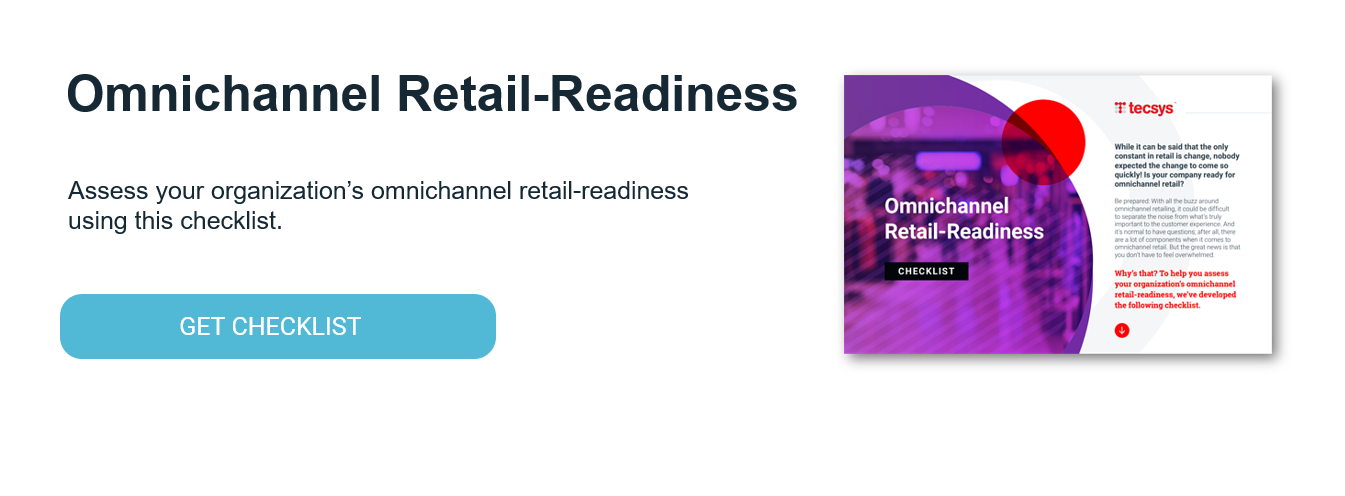5 Shipping Methods for Online Stores

Editor’s Note: This post was originally published in November 2018 and has been updated for freshness, accuracy and comprehensiveness.
In this new world of accelerated e-commerce, many retailers are looking for an answer to the question, “What are the best shipping methods for online stores?” While the “how to” of shipping products, shipping services and shipping charges are all important, equally important are the strategies used to ship products for online stores.
Here are five common methods to ship products for online stores, with a description of each and a few pros and cons to consider.
5 Shipping Methods for Online Stores
1. Ship from Distribution Centers
Ship from distribution centers (DCs) is the simplest shipping method for online stores and historically the most common one, where retailers ship online orders directly from their distribution centers. This method centralizes picking, packing and shipping resources. Additionally, some warehouses are extremely well automated to make the job fast and very efficient. There may even be greater shipping options, given that many carriers prefer bulk pickup locations.
Challenging the ship from DC model is the fact that most customer orders must travel far to their destinations. Certainly, in the last mile of delivery, distance counts. The further a package must travel, the greater the shipping costs. It specifically becomes a major tradeoff if a retailer only has one or two warehouses.
2. Ship from 3PL | Ship from Drop Shipper
A 3PL (third-party logistics) is essentially an outsourcing of the logistics operation. 3PLs will store inventory and pick, pack and ship orders from their own warehouses on behalf of a retailer. The advantage of using a 3PL as a shipping method for online stores is that a retailer has an experienced supply chain operation at their disposal without having to incur the overhead costs of hiring their own staff and managing the facilities and logistics. The disadvantage is that as a retailer grows, the cost of using a 3PL may be higher than running their own logistics operation.
A drop shipper might be a brand or manufacturer that warehouses their own inventory and ships orders themselves from their own DC on behalf of a retailer. What this means is that multi-brand retailers (like a department store, hardware store or big-box store) that sell online may have two or more drop-ship shipments for multi-line customer orders. The advantage to drop shipping is that a retailer can extend the breadth of their product offering without having to incur inventory costs. The disadvantage of drop shipping is that the retailer has little to no control over the last mile experience.
As online orders grow, retailers may use 3PL and the drop-ship model strategically. At some average order volume point, it makes sense for the retailer to use their own resources for fulfillment. However, even for these merchants, they may opt to keep the 3PL or the drop shipper for the long-tail items. In other words, there are some items that don’t sell in high volume, but orders still occasionally come in. A retailer may choose to warehouse high-volume, high-velocity items and use drop ship for the rest. In all these cases, the retailer needs to ensure that its order management system (OMS) can integrate seamlessly with the service provider.
3. Ship from Store
For online retailers with a physical brick-and-mortar presence, ship from store is a great option and a growing trend among retailers to use their stores as fulfillment centers. This type of strategy leverages the retailer’s physical assets to fulfill online shopping orders. Since physical stores are closer to customers than the typical DC, it also reduces shipping costs. This is specifically true when an OMS optimizes the location from which to ship the order.
Ship from store is a popular method to ship products for online stores because it uses a store’s inventory to fulfill online business sales. In this sense, store inventory turnover is higher, which results in a reduction in the pressure to mark down inventory.
4. In-store Pickup (Click & Collect)
A great option to ship products for online stores doesn’t include shipping at all! Instead, think in-store pickup. This is also commonly called click and collect or buy online pickup in-store (BOPIS). Like the ship from store model, in-store pickup is a core part of omnichannel retailing.
This method enables customers to “reserve” the merchandise by purchasing on the spot, ensuring that when they go to the store it will be available. It saves merchants the cost of shipping and when the online shopper comes into the store for the pickup, there’s a strong chance that they will purchase more items.
5. Ship to Store
The ideal scenario is to use an OMS to select store inventory to fulfill online shopping orders, but that might not always be possible. An alternative shipping method for online stores is for the DC to ship the order to a store.
Ship to store involves routing the online order at the DC, where it is picked and packed and then shipped to the store for pickup. This is not as ideal as using in-store inventory as it misses out on the benefits expressed in the ship from store description outlined above. It also has a potentially higher shipping cost. It can work, but it fails to leverage a retailer’s physical store inventory.
Which Option Is Best?
No single answer will meet every retailer’s needs. Of the five methods to ship products for online stores, the in-store pickup option offers great promise as it leverages a merchant’s entire resource base and reduces the cost of shipping and last mile shipping distance. Pickup offers fast fulfillment and the opportunity to experience the good and personal service provided at brick-and-mortar locations.
If your retail chain is considering the click and collect option, do it wisely. Retail chains with 20 or more stores cannot offer omnichannel services manually. To do this efficiently and in real time, you need a robust order management system. Look for additional features like shipping rate brokering, order consolidation and cross-channel returns.




